Middleham
OS grid reference:- SE 124 878
The small historic town of Middleham in stunning Wensleydale is dominated by its medieval castle, once home to Richard III.
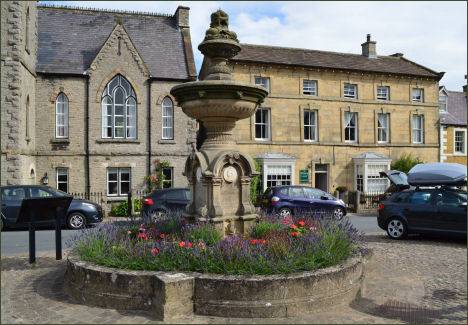
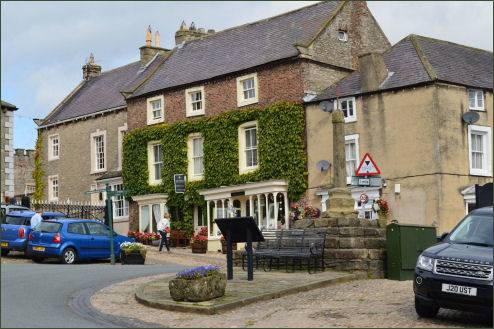
The town is situated on the north-facing side of the valley above the junction of the River Ures and Cover. A settlement has existed there since the Roman era. The town was recorded in the Domesday Survey of 1086 as 'Medelai', which means middle ham or village. William the Conqueror granted the land around Middleham to his Breton cousin Alan Rufus who built the first wooden motte-and-bailey castle above the town.
The picturesque town centre has cobbled squares, cafés, tea rooms and traditional pubs. Most of the buildings in the old part of the town date from after 1600, although the old rectory is partly medieval. Middleham is now a centre of horse racing and home to the Middleham Trainers' Association. Medieval Middleham Castle was the childhood home of King Richard III. The origins of Middleham Castle trace back to the eleventh century. Following the Norman Conquest, the land around Middleham was granted to Alan Rufus, a nephew of William the Conqueror, in 1069. He built a wooden motte-and-bailey castle on William's Hill, which was situated a short distance to the south-west of where the present castle stands.
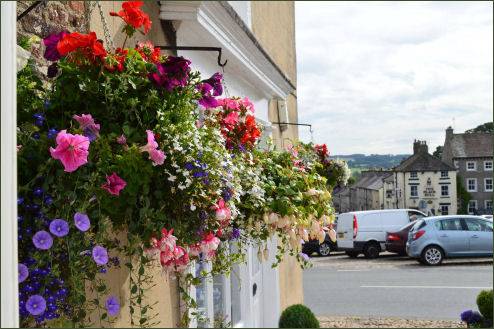
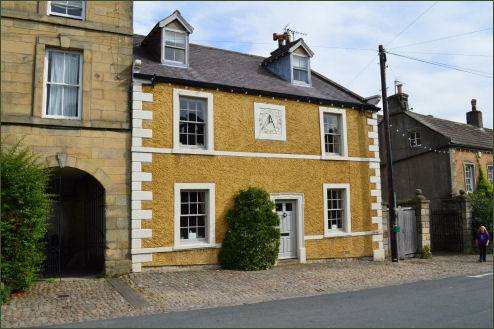
In 1478 King Edward IV granted permission for a leper hospital to be built on the eastern edge of Middleham. The location is still known as Chapel Fields and is now occupied by a horse training stables of the same name, although no trace of the hospital or chapel has survived. Following the death Richard, Duke of York at the Battle of Wakefield in December 1460, Richard and his brother, George, Duke of Clarence, York's two youngest sons, came into the care of their powerful cousin Richard Neville, Earl of Warwick. Both boys lived at Middleham with Warwick's own family where they came into contact with Warwick's two daughters, Isabel and Anne Neville, whom George and Richard were later to marry.
Richard acquired Middleham Castle through his marriage to Anne, he was said to be particularly fond of the castle, it became his principal base in northern England, and many of the improvements to the castle are thought to date from Richard's time there. Their only son, Edward of Middleham was born at castle in around 1473. His birth is reputed to have taken place in the round tower at the south-west corner of the curtain wall, traditionally known as the Prince's Tower
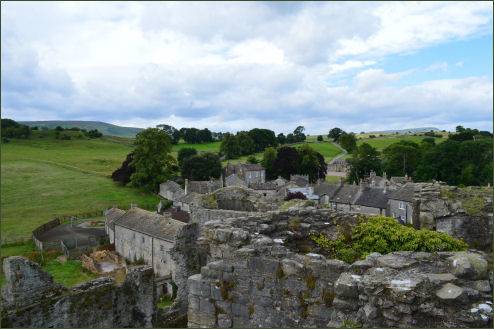
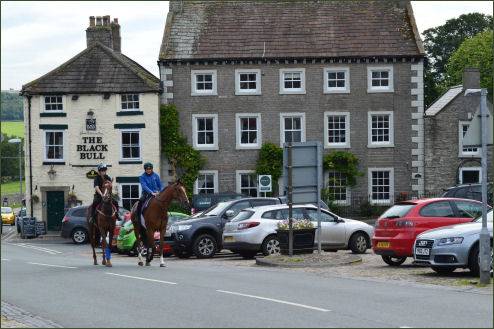
The Middleham Jewel, a fifteenth century gold diamond-shaped pendant with a blue sapphire at the top which was found on a bridle path near the Castle in 1985, by a metal detectorist, Ted Seaton. One side of the diamond shaped pendant is engraved with a representation of the Trinity and the other with a Latin inscription indicating that the pendant is a charm against epilepsy. No one knows who the jewel's owner was, but it has been dated back to the fifteenth century to around the lifetime of Middleham Castle's most famous occupant, Richard III.
A livery badge, for pinning to the chest or a hat, in gilded copper high relief, with Richard III's emblem of a white boar, has also been found in the vicinity of the castle, it was probably worn by one of his household when he was Duke of Gloucester. The Middleham Hoard, a hoard of three pots containing 5,099 silver coins in total, buried during the English Civil War, and the largest Civil War hoard ever to have been discovered.
Church of St. Mary and Alkelda
The Church of Saints Mary and Alkelda was founded in 1291 but much of the fabric of the building dates to the fourteenth and fifteenth centuries. The only remaining Norman fragment is a section of zig-zag moulding which now stands above the north aisle.
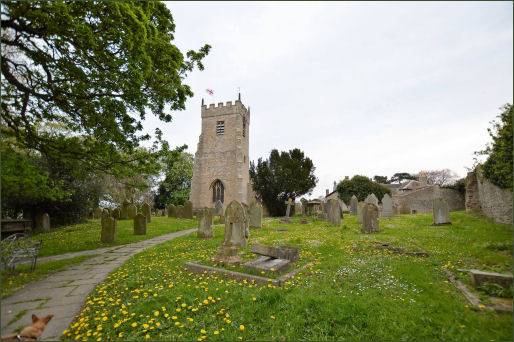
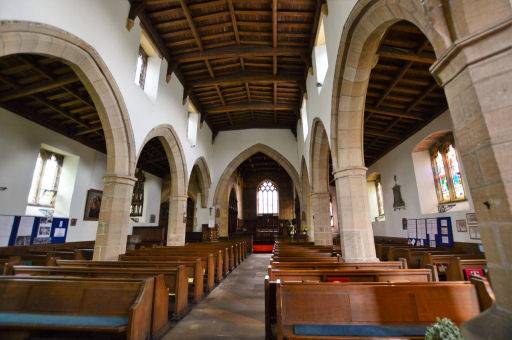
St Alkelda was a was a Saxon maiden, in some accounts described as a princess, who became a nun. She was murdered beside the spring by two Viking women who detested her Christian beliefs. Legend states they used a long length of cloth to carry out the deed. On the 28th March 800 AD Alkelda was proclaimed a martyr. What is believed to be her bones were discovered in a primitive stone coffin along with a Saxon stone, which formed part of her shrine) in the church in 1878. A stained glass window in the building (partly fourteenth century) depicts the saint's martyrdom.

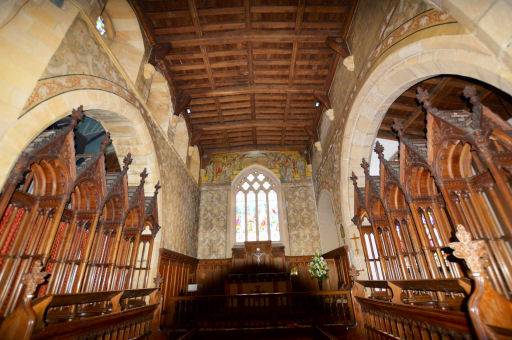
The church contains a Perpendicular font cover and a copy of the Middleham Jewel, a late fifteenth century gold pendant, set with a large blue sapphire.The jewel was discovered by Ted Seaton, a metal detectorist in 1985 on a bridle path near Middleham Castle. The jewel would have been worn by a high-status lady, as the centrepiece for a large necklace, possibly by Queen Anne Neville herself, or by Richard III's mother, Cecily Duchess of York. The Middleham Jewel was acquired by the Yorkshire Museum in York in 1992 for £2.5 million, using funds raised by a public appeal, including £1.7m from the National Heritage Memorial Fund.
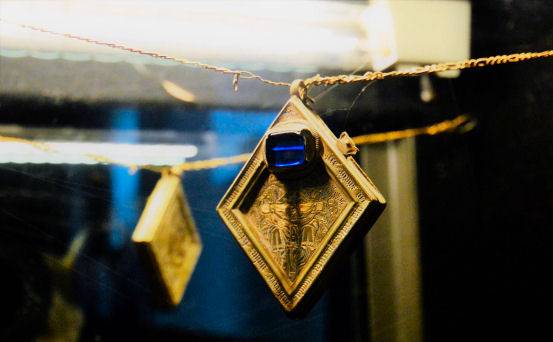
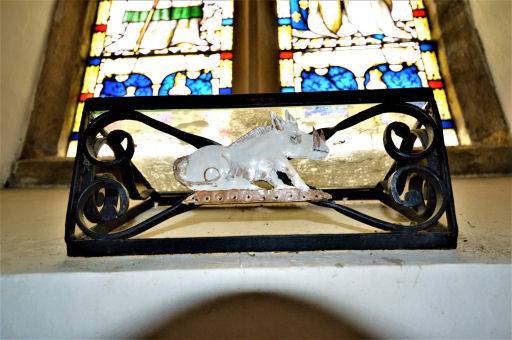
.A large tomb cover on the wall is that of Robert Thornton, Abbot of Jervaulx, who died in 1533. It is believed to have been brought to Middleham for protection at the time of the Dissolution of the Monasteries in about 1536. The Abbot's remains were also brought to Middleham and are buried near the Pulpit. King Richard III, Queen Anne Neville and their son Edward of Middleham, Prince of Wales, are depicted in a stained glass window of the church.
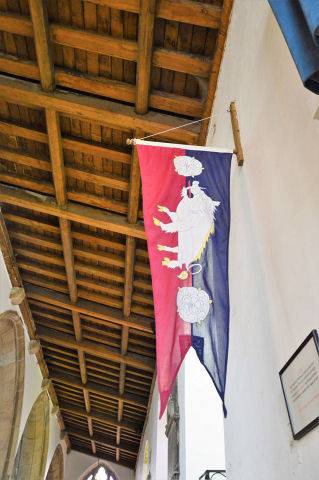
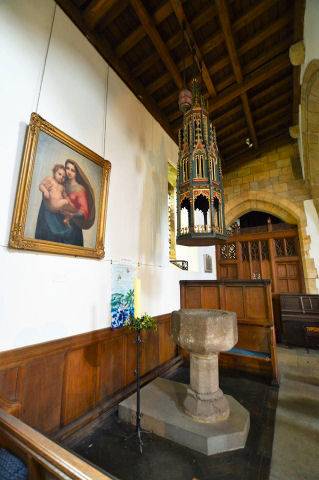
St Alkelda's Well (OS grid ref- SE 124 879) lies near the church , its waters were reputed to restore strength to weak eyes.
